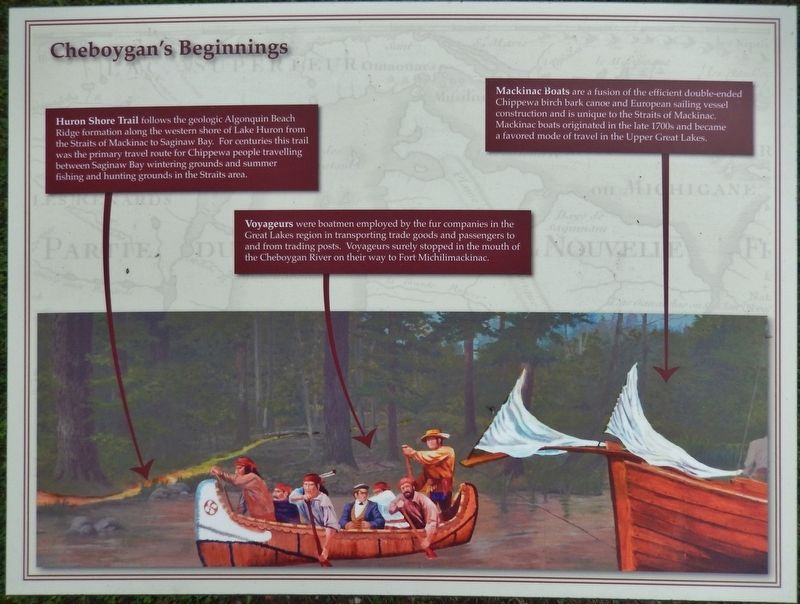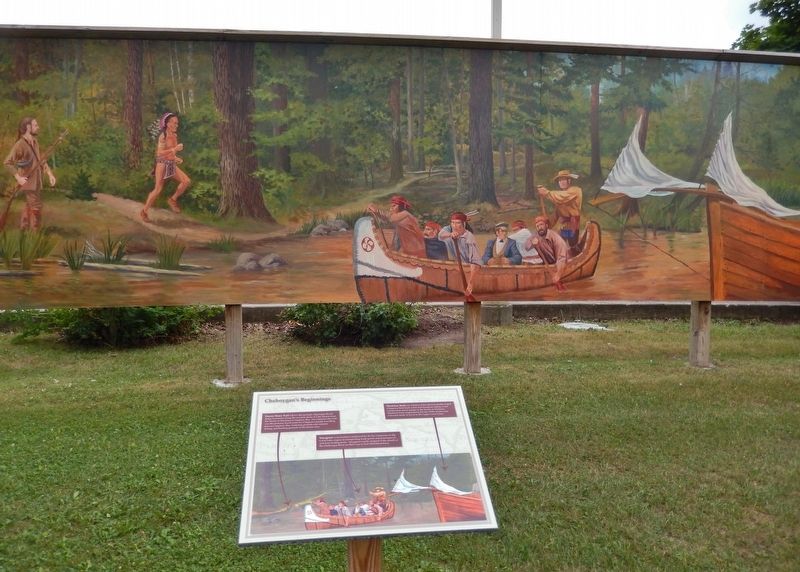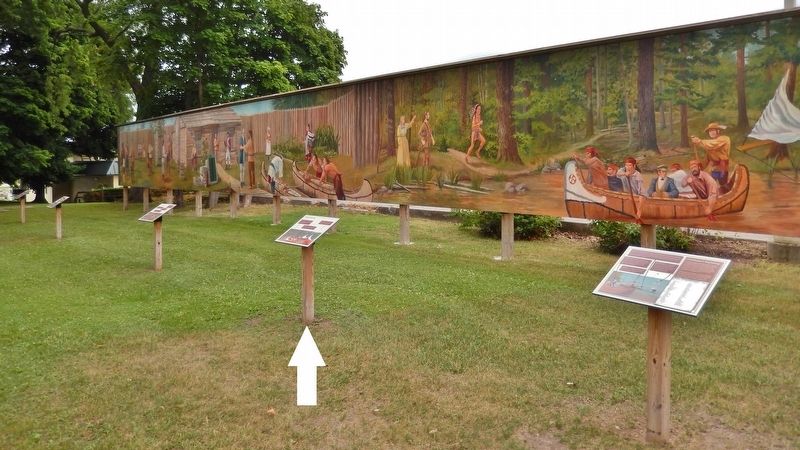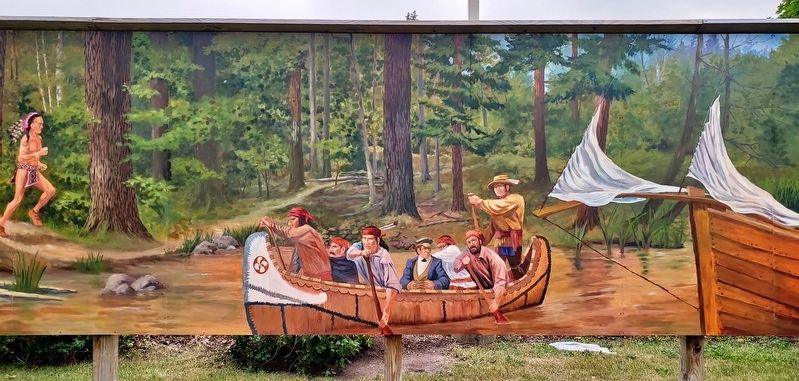Cheboygan in Cheboygan County, Michigan — The American Midwest (Great Lakes)
Cheboygan's Beginnings
Voyageurs
Huron Shore Trail
follows the geologic Algonquin Beach Ridge formation along the western shore of Lake Huron from the Straits of Mackinac to Saginaw Bay. For centuries this trail was the primary travel route for Chippewa people travelling between Saginaw Bay wintering grounds and summer fishing and hunting grounds in the Straits area.
Voyageurs
were boatmen employed by the fur companies in the Great Lakes region in transporting trade goods and passengers to and from trading posts. Voyageurs surely stopped in the mouth of the Cheboygan River on their way to Fort Michilimackinac.
Mackinac Boats
are a fusion of the efficient double-ended Chippewa birch bark canoe and European sailing vessel construction and is unique to the Straits of Mackinac. Mackinac boats originated in the late 1700s and became a favored mode of travel in the Upper Great Lakes.
Topics. This historical marker is listed in these topic lists: Colonial Era • Native Americans • Settlements & Settlers • Waterways & Vessels.
Location. 45° 38.6′ N, 84° 28.648′ W. Marker is in Cheboygan, Michigan, in Cheboygan County. Marker can be reached from North Main Street (State Highway 27) south of West Elm Street , on the right when traveling north. This marker, related markers, and associated mural are located along the south side of Cheboygan's Washington Park, on the east side of North Main Street. Touch for map. Marker is at or near this postal address: 124 North Main Street, Cheboygan MI 49721, United States of America. Touch for directions.
Other nearby markers. At least 8 other markers are within walking distance of this marker. A different marker also named Cheboygan's Beginnings (here, next to this marker); a different marker also named Cheboygan's Beginnings (here, next to this marker); a different marker also named Cheboygan's Beginnings (a few steps from this marker); a different marker also named Cheboygan's Beginnings (a few steps from this marker); Old Cheboygan County Courthouse (approx. 0.4 miles away); Jail and Sheriff's Residence (approx. 0.4 miles away); St. Mary Church (approx. half a mile away); Jacob J. Post House (approx. half a mile away). Touch for a list and map of all markers in Cheboygan.
More about this marker. Marker is a large composite plaque, mounted horizontally on a waist-high post. This is marker #4 of a five marker series which outlines some early colonial history and characters of Cheboygan, Michigan.
Related markers. Click here for a list of markers that are related to this marker. Cheboygan's Beginnings Mural Series
Also see . . . Voyageurs. Voyageurs often rose
as early as 2 am or 3 am. They set off very early without breakfast. Sometime around 8:00 am they would stop for breakfast. Lunch, when it existed, was often just a chance to get a piece of pemmican to eat along the way. Between eight and ten in the evening, travel stopped and camp was made. Voyageurs were expected to work 14 hours per day.
Danger was at every turn for the voyageur, not just because of exposure to outdoor living, but also because of the rough work. Drowning was common, along with broken limbs, compressed spine, hernias, and rheumatism. The outdoor living also added to the hazard of life and limb with swarms of black flies and mosquitoes, often kept away by the men sleeping with a smudge fire that caused respiratory, sinus and eye problems. Individuals wanting to rid themselves of the swarms that followed them often applied a Native America ointment made from bear grease and skunk urine. (Submitted on November 4, 2018, by Cosmos Mariner of Cape Canaveral, Florida.)
Credits. This page was last revised on November 6, 2018. It was originally submitted on August 16, 2018, by Cosmos Mariner of Cape Canaveral, Florida. This page has been viewed 124 times since then and 7 times this year. Photos: 1. submitted on August 17, 2018, by Cosmos Mariner of Cape Canaveral, Florida. 2, 3, 4. submitted on August 18, 2018, by Cosmos Mariner of Cape Canaveral, Florida. • Bill Pfingsten was the editor who published this page.



